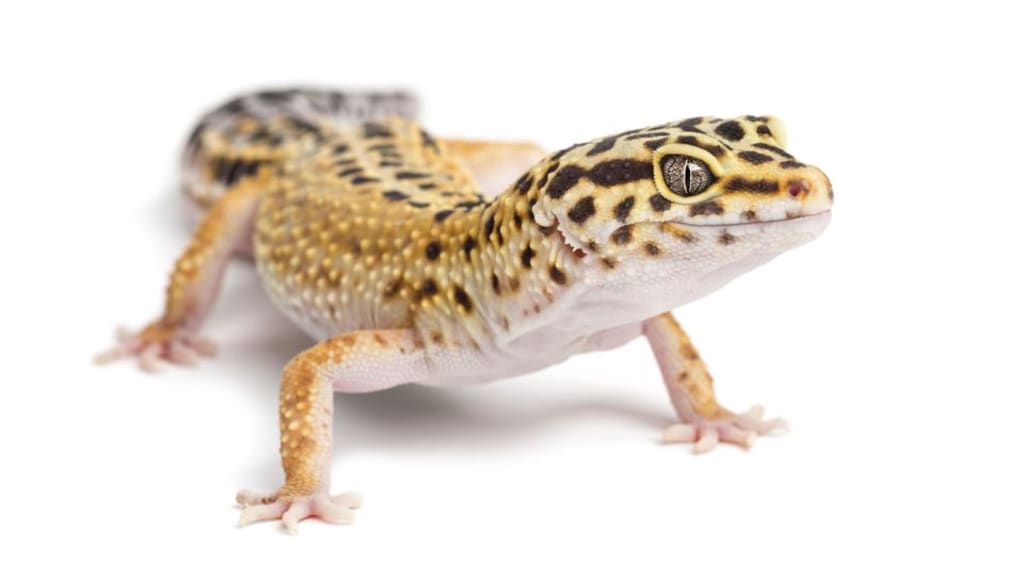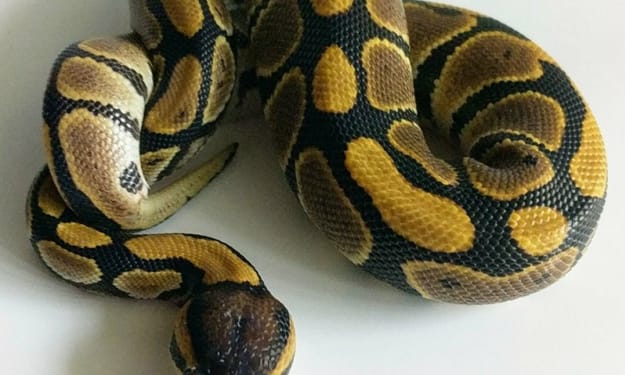Leopard Gecko Care
Caring for Pet Leopard Geckos

Leopard Geckos, or Eublepharis macularius, are one of the most popular pet lizards around. This is no doubt due to their docile nature, ease of care, and relatively cheap enclosure set-up.
Leopard geckos are a commitment, many of which live 6 to 10 years on average. Males tend to live longer than females, with some reaching their mid-twenties.
Leopard geckos are manageable due to their small size. Males are typically larger than females and max out at 10 inches long. On average, a male will grow to be eight to ten inches long. On the other hand, females grow to be seven to eight inches on average.
Providing the correct environment for your leopard gecko is a large part of keeping your lizard happy and healthy. For a single leopard gecko, a 10 gallon is perfect. However, if you wish to house more than one gecko, opt for a 20 gallon. Make sure that you provide plenty of hiding spots for your gecko(s). Make sure to provide at least two hides per gecko.
For substrate, you can use paper towels, newspaper, reptile carpet, and some keepers even use aspen shavings. Make sure to stray away from cedar bedding, as cedar is toxic to all reptiles.
Make sure that your gecko is also getting the supplementary heat that it needs to thrive. Reptiles are cold-blooded, which essentially means that they cannot create their own body heat. Leopard geckos require their enclosure to have a temperature gradient, meaning one side of the tank must be cooler, while the other must be warmer.
The enclosure's hot spot should measure between 88 and 90 degrees Fahrenheit. The ambient temperature for the enclosure should be about 75 degrees Fahrenheit. Unlike bearded dragons and a few other lizard species, leopard geckos do not require UVB lighting and don't require any other supplementary lighting in general. Leopard geckos will fare just fine with an under-the-tank heat pad.
Leopard geckos, like any other living creatures, require sustenance. Leopard geckos are strictly insectivorous, meaning that they only prey on bugs. They will not eat fruits or vegetables. Opt for feeding them mealworms and crickets.
Shopping List for Leopard Geckos
- 10-gallon tank
- Reptile Carpet
- Hideaways (2)
- Water Dish
- Mealworm Dish
- Heat Mat
- Thermometer
- Enclosure decorations (optional)
F.A.Q.
Do leopard geckos drop their tails? Yes, leopard geckos do drop their tails. However, they are capable of growing them back and will do so over the course of a month or two.
Are leopard geckos able to thrive in plastic storage containers? Yes, as long as there is proper ventilation installed. Many breeders keep leopard geckos in rack systems, in which geckos are kept in containers with all of the necessities of a normal enclosure.
Are leopard geckos good pets for children? Yes, as long as the child is patient and calm when handling the animal. Children who move the animal about violently like a toy will stress the animal out.
Do leopard geckos come in different colors and patterns? Yes, there are pattern and color mutations in leopard geckos, similar to ball pythons. Leopard geckos also have eye morphs, where the color of the eye changes with selective breeding. An example of this is the eclipse gene.
If I wanted to give my leopard gecko a treat, what should I feed them? Super worms are a good treat to give to your gecko, however, they are high in fat, and should not be used in their everyday diet.
How many eggs do leopard geckos produce? Leopard geckos typically produce two eggs at a time.
Where are leopard geckos found in the wild? Pakistan and India, and throughout Asia.
What climate are leopard geckos native to? Leopard geckos thrive in deserts, and their enclosures should mimic the desert. However, you should never keep reptiles in sand, even if you wish to mimic the desert climate. Keeping reptiles on sand can cause impactions in their gastrointestinal tract from digesting the grains of sand.
About the Creator
Briana Bayles
Just a reptile enthusiast with the goal to break the stereotype of the most misunderstood creatures in the world.






Comments
There are no comments for this story
Be the first to respond and start the conversation.